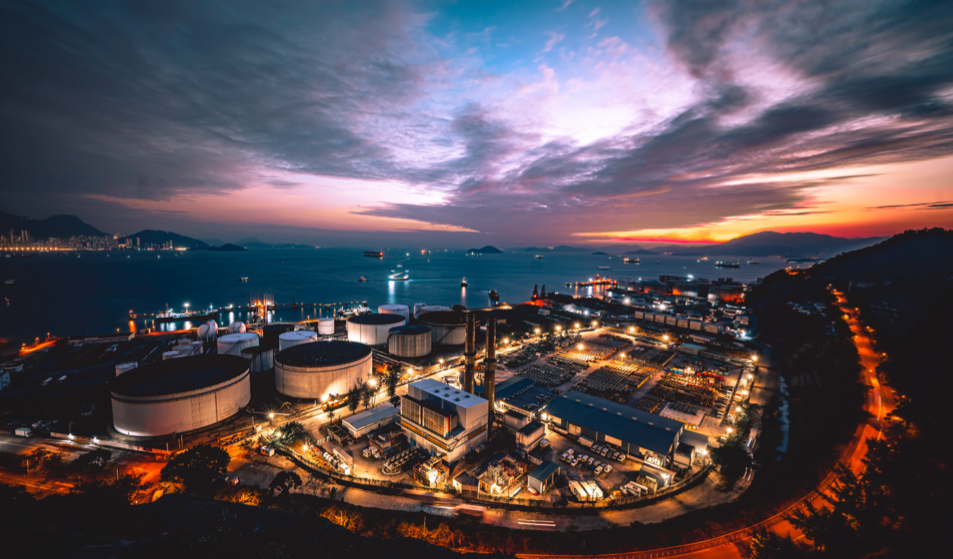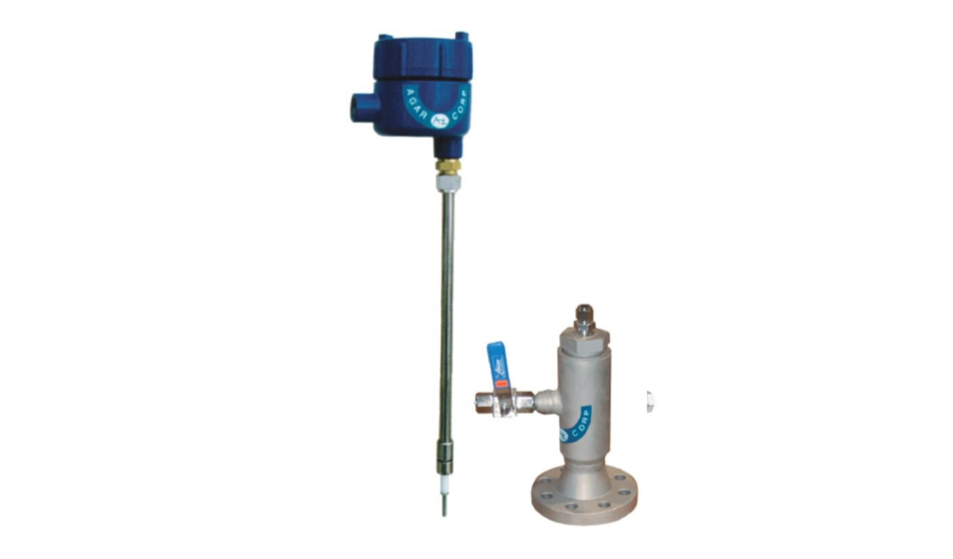Our groundbreaking ID-200h Oil Tank Dewatering System represents a significant leap forward in applying smart technology to the oil industry. Boasting advanced sensors and automation, the system ensures optimal moisture removal, thereby greatly enhancing crude oil quality. This system is created through intelligent design to integrate seamlessly into existing refinery operations, providing a sophisticated, user-friendly interface for monitoring and control. The ID-200h system is far more than just an innovation; it offers refineries a competitive edge through improved oil processing efficiency and tangible cost-saving benefits.
Key Takeaways
- The ID-200h is the new standard for the automatic crude oil desalting system, using advanced smart technology to optimise moisture removal.
- With its user-friendly interface and cutting-edge design, the ID-200h system seamlessly integrates into existing refinery operations.
- Improved oil processing efficiency is simply one of the many benefits of the ID-200h system.
- Implementing the Smart ID-200h system allows refineries to reduce operating costs and minimise waste significantly.
- The ID-200h system represents a significant step forward in the field of crude oil desalter, setting a new industry standard.
- Refineries can now take advantage of the competitive edge the ID-200h system offers, sparking a revolution in oil industry standards.
The Role of Smart Technology in Oil Dewatering
Progress in the oil industry is intrinsically linked with the adoption of advanced technology. Smart systems now play a pivotal role in various processes, with oil seperation standing out as a key area of transformation. The shift from manual, labor-intensive processes to automated systems has catalyzed unprecedented efficiency gains. This paradigm shift has been achieved primarily through the use of smart technology within the oil industry.
The Evolution of Oil Dewatering Systems
Reflecting on the historical context of oil dewatering, initial methods were largely manual and less precise, often resulting in substandard oil quality and elevated operational costs. The labor intensity of these methods also added to their unsuitability for large-scale operations. The inception of the automatic oil desalting system marked the commencement of a new era. This not only mitigated the inherent drawbacks associated with the conventional methods but also surged efficiency in operation.
How Smart Technology Elevates Efficiency
The dawn of intelligent technology marked a pertinent shift in the operating dynamics of the oil industry. Systems such as the ID-200h that employ robust real-time data analysis, automated controls, and intricate adaptive feedback mechanisms have revolutionized the oil-water separation process. The smart technology oil industry has benefited from increased throughput and significant reduction in human errors. This has elevated operational efficiency milestones profoundly.
Case Studies: Smart Technology in Action
In real-world scenarios, the convergence of smart technology has led to compelling success stories. Refineries that have adopted these advanced systems have reported marked improvements in both operational efficiency and output quality. To better understand these improvements, let’s consider two major refineries A and B.
| Refinery | Old Method | New Technology (With ID-200h) | Operational Efficiency Gain |
|---|---|---|---|
| Refinery A | Manual | Automated (With ID-200h) | 57% |
| Refinery B | Semi-Automatic | Automated (With ID-200h) | 33% |
The figures here not only highlight the effectiveness of the automatic oil dewatering systemID-200h but also underline the significant enhancements in operational efficiency stemming from the smart technology oil industry.
Key Features of the ID-200h
The D-200h has a distinct collection of features that significantly enhance its performance in crude oil processing. It adopts cutting-edge technology to provide an automated dewatering mechanism with high precision.
One notable trait of this system is the integration of automated sensors and actuators, working in perfect harmony to adjust the dewatering process in real-time. This guarantees consistency in the quality of the output.
To further highlight the outstanding attributes of the ID-200h Dewatering System, we have tabulated the key aspects below:
| Features | Benefits |
|---|---|
| High throughput capacity | Ability to process large volumes of crude oil efficiently |
| Compatibility with various grades of crude oil | Flexibility in handling different types of oil without any compromise on performance |
| Robust construction | Designed to endure the harsh conditions in oil refineries, ensuring longevity |
| User-centric design | Ease of operation and reduced learning time for operators |
| Durable materials and components | Minimises the need for frequent maintenance, thereby reducing operational costs |
“Incorporating the ID-200h Dewatering System in your crude oil processing is a significant leap towards achieving superior efficiency in operations.”
In oil refining, our commitment to delivering automated performance is underpinned by the continual evolution of the ID-200h Dewatering System. Its sophisticated design and intelligent features offer a seamless and efficient dewatering process, setting it apart as a game changer in the oil industry.
Automatic Crude Oil Dewatering System ID-200h
An effective and efficient system is vital for the dewatering process in refining technology. This is where the advanced ID-200h system comes into play, specifically designed to meet the rigorous demands of modern oil refineries with its robust capabilities.
Overview of the ID-200h System Capabilities
The ID-200h, a product of advanced oil dewatering solutions, stands out with its highly efficient processing capacity. It manages to process large volumes of crude oil within a stipulated timeframe, ensuring that water and other impurities are separated speedily and efficiently. One of the main benefits is its potential to reduce oil losses to a bare minimum, preserving the quality of the final product.
Integration of ID-200h with Existing Infrastructure
Easing the ID-200h system integration process, it connects seamlessly with existing infrastructures without needing extensive modifications. This ensures a smooth transition, enabling refineries to upgrade their dewatering processes without disrupting their current operations.
In summary, the ID-200h system is truly a revolution in oil dewatering technology. Its integration capabilities make it a much-needed asset to the oil industry, geared to elevate the efficiency and refinement of its processes. As we continue to refine our technology, we are confident that the ID-200h will remain at the forefront of advanced oil dewatering solutions.
Enhancing Crude Oil Quality with Effective Dewatering
To improve crude oil quality, remarkable strides have been made to adopt and adapt technologies that refine output. Optimal dewatering plays a pivotal role in this undertaking, as excess moisture can present challenges during the refining process and affect final product quality. The key lies in leveraging advancements developed to enhance the dewatering process—predominantly, the application of effective moisture removal technology.
Enter the ID-200h system, which is steered by its efficiency and precision in separating oil and water. But, what makes it stand out?
- Technical Sophistication: The ID-200h system utilises cutting-edge technology, setting it apart in the realm of oil dewatering. This model goes beyond the basic capabilities of separation, delivering meticulous, high-quality results.
- Quality Enhancement: By preserving the oil’s intrinsic properties, the ID-200h system helps in the production of a superior product. Output that not only meets, but often surpasses stringent industry standards.
- Value Realisation: Through the proficient dewatering and enhanced quality, the value of the produced oil significantly improves. This increases market competitiveness and potential revenue generation.
Above all, the ID-200h efficiency is what sets it apart—delivering superior results in a controlled, predictable manner. The system’s efficacy in dewatering aligns with the continuous drive for better quality in the oil industry, thus placing itself as an indispensable resource. As we stride forward towards cleaner and higher-quality oil production, the role of systems like the ID-200h cannot be overlooked.Hence, the attention and investment in such technologies should remain a priority for the industry.
Cost Savings Associated with Advanced Dewatering Systems
In today’s ever-competitive oil industry, finding cost-effective refining solutions that also uphold the responsibility towards environmental sustainability is paramount. The advancement in technology leading to the invention of sophisticated systems like ID-200h has set a new precedent for the industry, making operational cost reduction achievable below previous benchmarks.
Reducing Operational Costs
Embracing the ID-200h Dewatering System facilitates this endeavour by automating the previously labour-intensive dewatering process. The cutting-edge technology incorporated in ID-200h reduces the workforce requirement for constant monitoring and intervention. Efficient management of the dewatering process means that operational expenses are kept to a minimum, enabling the refinery to allocate resources to other significant areas.
Minimising Waste and Environmental Impact
Environmental sustainability is a pivotal consideration for any industry; the oil industry is no exception. The ID-200h Dewatering System’s efficient separation process is crucial in drastically minimising oil waste. This contributes to a more sustainable operation aligning with environmental standards and considerations.
| Manual Systems | ID-200h System |
|---|---|
| High operational costs due to intensive labour needs | Significant operational cost reduction due to automation |
| High wastage leading to environmental impact | Minimised waste and less environmental impact from oil refining processes |
| Frequent process-related errors | Fewer process-related errors due to precision and efficiency |
Operational Excellence with the ID-200h System
In striving for operational excellence, the ID-200h Dewatering System is in a league of its own. The system is a testament to the power of merging innovative engineering with best-in-class technology. These attributes are vital in crafting a system capable of consistent and reliable performance.
Performance is a broad concept; it encapsulates multiple aspects of the dewatering process. To make this clear, we have broken down the main components that contribute to the ID-200h system performance:
- Automated Controls: Automatic sensor stimulation rapidly prompts the necessary adjustments.
- Consistent Quality: The system ensures the delivery of top-quality crude oil in all circumstances.
- High Throughput: Increased processing capacity results in higher outputs and enhanced productivity.
- Optimal Integration: Its flexible design allows seamless incorporation into existing infrastructure.
“Operational excellence is not a destination; it’s a journey that never ends.”
As evidenced above, the ID-200h system is more than a mechanism; it is a strategic partner, designed to push boundaries and redefine standards in the oil refining process. Its advanced features allow for precise control and fine-tuning, thereby guaranteeing top-quality outputs under various operating conditions.
Refining process optimisation is a continuous undertaking involving multiple strategies, mainly focusing on improving equipment performance, reducing downtime, and enhancing workforce proficiency. This is precisely what the ID-200h delivers. With our system at your refinery, efficient, effective, and optimised operation is no longer an aspiration; it’s the new reality.
Understanding the Dewatering Process in the Oil Industry
As we delve deeper into the industrial sophistication of the ID-200h system, it becomes imperative to appreciate the nuances of the dewatering process. This familiarity will provide a deeper reservoir of knowledge to glean why ID-200h stands as a forerunner in refining process improvements. Let’s cast an analytical eye over the stages of oil dewatering and unravel the challenges that traditional dewatering systems face.
Stages of Oil Dewatering
The oil dewatering process unravels in various stages governed by the complexity of the oil-water mixture and the specific parameters of the crude oil under scrutiny. Its overarching aim is geared to separate water from oil, curating a refined product ready for the market. Here’s an overview of these stages:
- Preliminary water separation: Initiated immediately after extraction, this step segregates bulk water content from the oil.
- Dewatering: An intricate and crucial stage, it focuses on separating finely dispersed water, locked in emulsion form, from the bulk oil.
- Final moisture removal: The final purification layer removes residual moisture, conveying a high-grade crude oil output.
Challenges in Traditional Dewatering Methods
Moving on to contextualise the tribulations faced by conventional dewatering techniques, two glaring tribulations remained at large. Among the oil dewatering stages, one of the main dewatering challenges has always been the issue of emulsion. Traditional techniques grappled with emulsions – a perplexing mixture of oil, water, and surfactants – that resisted separation. Second, was the quandary posed by the handling of varying oil compositions. As different crude oils have varying properties, old-age methods weren’t adaptable enough to accommodate these variations.
In light of these enduring issues, it is clear how our ID-200h system, aimed to revamp oil refining process improvement, bridges the gap and brings efficiency even amidst such challenges. Fuelled by technology, the ID-200h ensures optimised oil dewatering stages with precision, rectifying the pitfalls and setting an industrial benchmark for the future of oil refining.
Innovations in Dewatering: Compare and Contrast
The dewatering innovations within the oil industry are undeniably remarkable, particularly when scrutinising older practices alongside current, cutting-edge methods. Historically, the dewatering procedure was laborious and inefficient, with various problems associated with consistency, quality, and productivity.
Our attention is magnetically drawn towards contemporary technology, such as the ID-200h system, when considering performance benchmarking within the industry. The ID-200h provides a vivid example of technological advancement reshaping dewatering procedures.
| Dewatering Systems | Automation | Adjustability | System Intelligence |
|---|---|---|---|
| Older Generations | Low | Limited | Minimal |
| ID-200h | High | Wide Range | Advanced |
The ID-200h boasts marked enhancements in numerous key areas, such as functionality, system intelligence, and adaptability. These attributes enable it to consistently outperform older generation systems and maintain a competitive edge, providing an efficient and reliable solution to oil dewatering.
It’s apparent that the ID-200h system is leading innovation within the oil dewatering sector, setting a precedent for efficiency, versatility, and intelligence.
This review affirms the immense value of continuous innovation within the industry, illuminating the significant advantages that modern, advanced systems bring to the fore. As we move towards a future teeming with potential for further advancement, the ID-200h remains a formidable testament to the transformative power of technology and the inherent capacity for improved efficiency in oil dewatering processes.
Installation and Maintenance of Your ID-200h System
Accurate installation and conscientious maintenance are the foundations of the ID-200h system’s effectiveness. Streamlined for optimal efficiency, the implementation process relies on the assistance of highly skilled specialists to guarantee a flawless setup. Consistent, regular maintenance, designed to preserve and extend your system’s lifespan, helps secure enduring peak performance.
Starting Up the ID-200h System
Once the ID-200h system installation is complete, commencing operations becomes smooth and straightforward. Rigorous factory testing ensures it arrives ready for action, eliminating unexpected complications at startup. Before initiating your system, ensure you undertake a final walkthrough, verifying alignment with the user manual’s installation guidelines.
Meticulous attention to startup procedures, as outlined in our detailed instructions, sets the foundation for smooth, ongoing operations. Operator training is also highly recommended for optimal system management and to ensure that the procedures are performed accurately and safely.
Maintenance Protocols for Longevity and Performance
Maintenance is key to the continued high performance, longevity, and durability of the ID-200h system. We have developed a prescribed routine of progessive and maintenance best practices specifically for the ID-200h, designed to safeguard the system’s integrity and operational standards.
These protocols include:
- Regularly scheduled inspections to monitor wear and tear
- Component cleaning and replacement schedules
- Data analysis for anticipating potential issues
- Customised protocols for various operation conditions
With proper care and attention to maintenance procedures, your ID-200h system will continue to perform at its best, maximising your oil dewatering output, and significantly increasing system longevity.
Knowledge and adherence to maintenance protocols is the key to prolonged system performance and effectiveness. It is important to keep in mind that with any advanced refining technology, such as the ID-200h system, proactive maintenance is essential for minimizing downtime and mitigating potential damage.
| Maintenance Task | Frequency | Expected Benefits |
|---|---|---|
| Periodic Inspection | Weekly | Detect wear and tear early; prevents sudden system failures |
| Component Cleaning | Monthly | Prolongs lifespan of key components; maintains system efficiency |
| Data Review | Bi-weekly | Anticipates issues before they escalate; helps fine-tune system for optimal output |
Case Studies: Success Stories of Automatic Tank Dewatering with ID200h
One success story of automatic tank desalting with ID200h comes from an oil and gas company that was experiencing frequent shutdowns due to excessive water accumulation in their tanks. This not only resulted in significant downtime but also increased maintenance costs associated with manually pumping out the water. By implementing the ID200h system, which automatically removes water from the tanks when a certain threshold is reached, they drastically reduced their downtime and maintenance expenses. Moreover, this solution helped improve overall operational efficiency by minimizing human error during manual pump-outs.
Another case study involves a mining company dealing with groundwater infiltration into their underground storage tanks. The presence of water not only posed risks for structural integrity but also interfered with extracting valuable minerals stored within those tanks. With the implementation of automatic tank desalting using ID200h technology, they could effectively remove excess water from their tanks without any manual intervention or disruption to ongoing mining operations. As a result, they experienced improved safety conditions underground while optimizing mineral extraction processes.
These success stories highlight how automatic tank dewatering with ID200h can enhance efficiency and safety for companies across various industries faced with liquid accumulation challenges in their storage facilities. By reducing downtime related to manual pump-outs or maintenance activities caused by excessive water levels in tanks, businesses can realize cost savings while ensuring continuous operations. Additionally, automated solutions like ID200h help minimize risks associated with overflowing or compromised structures while ensuring regulatory compliance regarding waste management practices.
Conclusion
In summing up this discourse on this topic, it is clear that the landscape of the oil industry is set to transform significantly, primarily due to advancements in technology. Our focus throughout has been on the remarkable ID-200h dewatering system, which brings together advanced technology and efficiency in a unique union that promises extraordinary performance.
The Future of Oil Dewatering with ID-200h Technology
Looking towards the future of oil dewatering, it is virtually impossible to overlook the profound impact of the ID-200h system. This industry-leading desalting system employs state-of-the-art smart technology to ensure impeccable performance, thus enhancing the quality and refinement of extracted oil. The ID-200h system has not only proved its worth in current practices but its adaptability and robustness are sure to persist as defining features in times to come.
Why the ID-200h System is the Choice for Industry Leaders
Why, you might ask, has the ID-200h become the choice of industry leaders across the globe? Simply put, it is the testament of what can be achieved when innovation meets practicality. The ID-200h’s adoption in refineries continues to grow, as industry experts recognise the considerable benefits it offers, such as enhanced oil quality, substantial cost savings, and positive environmental impacts. As such, the ID-200h is more than just a dewatering system; it is a bridge to the future of the oil industry, driving progress and setting new standards in oil dewatering.
FAQ
What is the advantage of using the automatic crude oil dewatering system ID-200h?
The ID-200h system offers several advantages. With advanced sensors and automation, it ensures optimal moisture removal, enhancing the quality of crude oil. The system integrates seamlessly into existing refinery operations and provides a user-friendly interface for monitoring and control. It offers improved efficiency and cost-saving benefits.
How has the use of smart technology impacted oil dewatering practices?
The integration of smart technology signifies a transformative shift from manual to automated processes in oil dewatering. Systems like the ID-200h leverage real-time data analysis, automated controls, and adaptive feedback mechanisms to optimise the separation of oil and water, drastically improving efficiency and throughput.
What are the key features of the ID-200h dewatering system?
ID-200h Dewatering System features automated sensors and actuators that adjust the dewatering process in real-time, ensuring consistent quality. It boasts a high throughput capacity, compatibility with various crude oil grades, a user-centric design for easy interfacing, and a durable construction that reduces maintenance needs.
How does the ID-200h system improve the quality of crude oil?
The ID-200h system utilises cutting-edge technology to meticulously separate oil and water, consequently preserving the oil’s intrinsic properties. This results in a superior end-product that adheres to strict industry standards and increases the overall market value of the produced oil.
How does the use of systems like ID-200h result in cost savings?
Use of the ID-200h system results in significant cost savings. The automated process reduces the manpower required for monitoring and management, directly cutting operational expenses. It minimises oil waste, leading to more sustainable operations with less environmental impact. The system also reduces process-related errors, saving costs on corrective measures and quality control.
What steps are involved in the oil dewatering process?
Dewatering involves multiple stages, from preliminary water separation to final moisture removal. The ID-200h system overcomes challenges of conventional methods, ensuring each stage of dewatering is completed to the highest standard, thereby streamlining the entire refining process.
How does the ID-200h compare to other desalting systems?
The ID-200h outperforms older generations in several key areas, including automation, adjustability, and system intelligence, making it a significant advancement in the field of oil dewatering. Benchmarking these results underscores the value of continuous innovation in the industry.
How should the ID-200h system be installed and maintained?
The installation process of ID-200h has been streamlined for ease and efficiency. Regular maintenance is prescribed to maintain the system’s high performance over time. These protocols preserve the integrity and longevity of the system. Adequate training is also provided to ensure staff can carry out necessary procedures accurately and safely.
What makes the ID-200h system the choice for industry leaders?
The ID-200h system is the choice of industry leaders due to its superior performance, advanced smart technology, and the considerable operational benefits it offers. These benefits include enhanced oil quality, substantial cost savings, and environmental benefits. It remains a pivotal technology in the industry and setting standards for the future.




